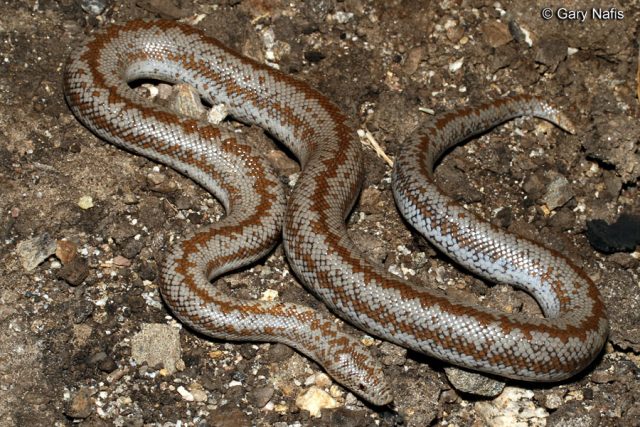Type the name of the breed you're looking for below
[wpdreams_ajaxsearchlite] Don't see the breed your're looking for? Click here and let us know!
Rosy Boa
| Place of Origin and Range | The Rosy Boa is native to the United States. |
| Description | The common name is derived from the rosy or salmon colouration that is common on the belly of rosy boas originating from coastal southern California and Baja Mexico. Most rosy boas do not have this ventral colouration but instead have a series of dark to orange spots on a light-coloured background. Almost all rosy boas have at least some trace of three longitudinal stripes, one down the centre of the back, and two on the lower sides. The appearance of these stripes varies widely, from extremely straight and having high contrast with the inter spaces, to extremely broken with almost no contrast with the inter spaces. Stripe colours can be orange, maroon, rust, brown, or black. Inter space colours can be shades of light to dark grey, yellow, or tan. |
| Morph Patterns Available | Yes |
| Adult Size | Can grow 2-3 feet (0.6- 0.9m) |
| Accommodation | Arid Rocky habitat. To avoid injuries anchor any rocks in the vivarium before you add the substrate. In this case sand. You will want to include a large dish for bathing and soaking in to improve shedding. Always include a day basking spot at 80'F(27'C). Along with multiple hides. Minimum 2 x 2 x 4 feet for an adult. |
| Lifespan | Can live 15+ years |
| Feeding / Diet | Like most snakes the Mexican rosy boa can eat mice, rats, and some newborns prefer lizards; depending on the size of your snake and the availability of feed. |
| Breeding | Viviparous they breed readily November through April in the United States delivering live birth averaging 10-20 babies born spring through late summer. The young at birth typically are 20–25 cm (8-10 inches) in length. |
| Other Considerations | Captive bred only available. Wild specimens are protected from commercialization. Snakes are relatively hardy low maintenance animals when kept in the correct environment, and require little day to day care other than feeding and cleaning out the tank as required. However, like all animals, they can still become sick or injured despite our best intentions to prevent this. |



